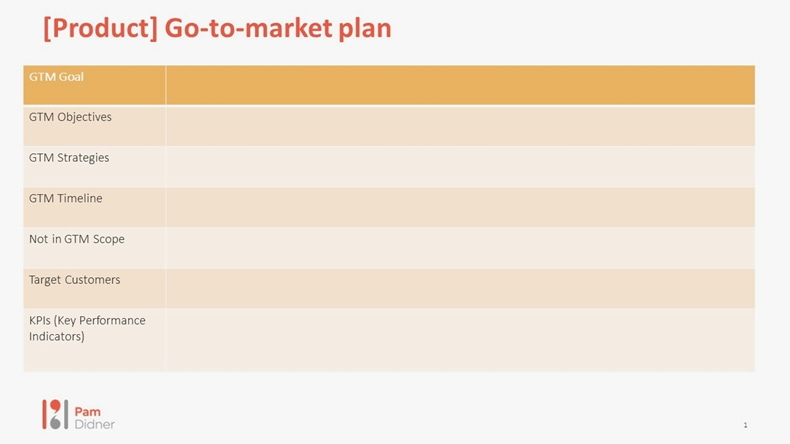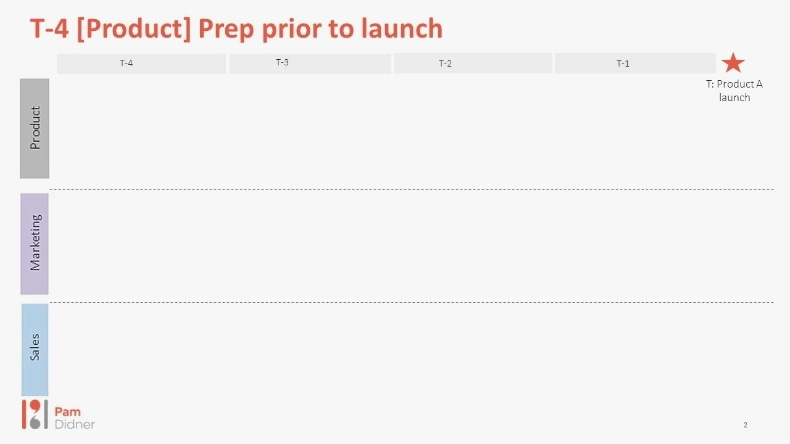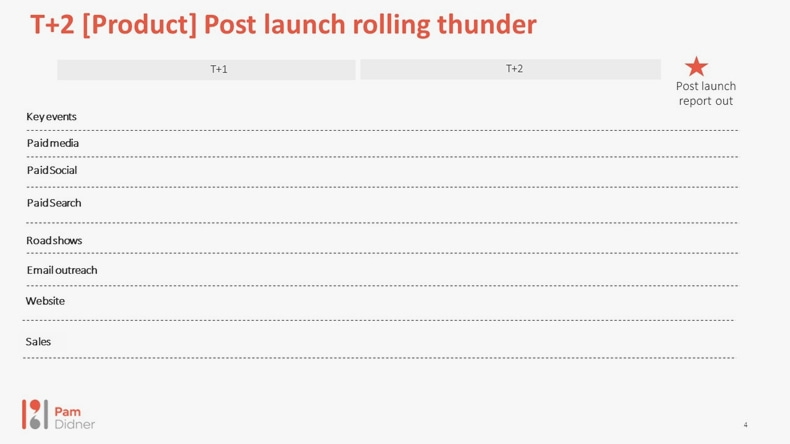The term "go-to-market" (GTM) captures the essence of B2B marketing and sales all at once. You have a product and you're ready to go. You work collectively with team members to bring that product to market. How exciting is that!
That's what B2B marketing is all about...
After working with many enterprise clients to collaboratively develop solid go-to-market plans, I've discovered that management buy-in is the most vital element of any GTM planning.
And management buy-in hinges on the quality and clarity of the GTM plan you put together.
Present critical data points that management needs to know
The most critical slides are your opening slides in decks you create for key leadership and decision-makers.
They need to summarize the key points of your GTM in 1-2 slides. They should include what management really cares about:
- What proposed revenue or pipeline opportunities can Marketing and Sales bring in as part of GTM ("how much")?
- What are the GTM objectives ("what")?
- What are the GTM strategies ("how")?
- What is the GTM timeline ("how long")?
- What is not in the scope?
You need to present all the information in a succinct manner that's easily snackable and digestible for your leadership team. Management doesn't have time to read lengthy descriptions. Summarize key points for them.
Also, to ensure everyone is on the same page, let them know what is not in your GTM scope. Achieving departmentwide buy-in, in the beginning, is critical as you move through the implementation of your GTM plan.
Here is a GTM plan template you can use. You just need to fill in the blanks. This slide contains all the essential information your leadership team and stakeholders need to know before you dive into the details:
Here's how to design GTM strategy components
GTM has three key components: Product, Sales, and Marketing. The way I recommend you show the information is based on a timeline and those three components.
- Let's say your launch date is T (a specific date).
- To prep for launch, you have four months; you should have a timeline to show what you are doing during those four months (T-4).
- Say you plan to launch integrated marketing campaigns two months after the launch, then you should have a slide to show what happens post-launch (T+2).
Once you have a timeline in place, you can identify your critical deliverables by Product, Sales, and Marketing.
Here are the templates you can use for T-4, T, and T+2:
Are you interested in GTM planning? Are you a MarketingProfs PRO member?
Then you're in luck!
Join Pam Didner for her PRO-exclusive working webinar series—four information-packed sessions—presented by MarketingProfs
How to Build a Successful GTM Marketing Plan
It's just one of the many resources available to MarketingProfs PRO members.
Build your GTM plan based on 'prior, during, and post' GTM templates
Now you have your prior, during, and post-GTM slides, you can build your GTM plan accordingly. You can also share the details and campaigns from these slides to educate your managers and key leadership on what you will do and when.
Again, think about what information you want to share on your supporting slides, not a laundry list of tactics.
Here are some examples of slides that you can add as part of the GMT plan:
- Ideal customer profile (ICP). Sales and Marketing need to align on ideal accounts. Sales need to be able to clearly articulate ICP if Sales and Marketing collaborate on account-based marketing ( ABM).
- Buyer personas. Clearly define your customers—their pain points, challenges, and aspirations—which will help with messaging and content development.
- Messaging. The product and marketing teams need to work together to determine unique differentiators and key talking points of your GTM product.
- Select marketing channels for your campaigns. Some marketing channels are critical for your GTM campaign; therefore, have 1-2 slides to talk about the channels that you allocate the most marketing budget.
- Content road map. No GTM can be completed without sales and marketing content. Create a list of content, and communicate it clearly with everyone.
- Proposed budget breakdown. You have a GTM budget and you share the breakdown on big-ticket items to help everyone understand where your budget goes and how it aligns with your campaigns, content, and launch event(s).
- Sales enablement. For GTM to be successful, Marketing needs to incorporate Sales support, such as product training, providing sales content for sales stages, and offering air cover for strategic accounts. Have a slide to show management what you do for your sales team.
Use tools and weekly meetings to monitor progress
Once you have a plan, the next step is to transfer deliverables and tasks to your project management tools; assign tasks to appropriate owners; and have a weekly or biweekly GTM meeting to monitor progress.
Depending on how hands-on your leadership team is, you need to determine the frequency of the GTM updates you provide to your executives.
Proactively inform your managers and leadership of the progress and seek their input to adjust your course. Management has the tendency to change their minds, change direction, and add last-minute requests. You need to manage that tendency and reflect an attitude of patience.
Management buy-in and support are key to GTM success
I often find that GTM is not hard, it's just tedious.
As a GTM lead, you need to learn to cover multiple fronts:
- Understanding your products as much as you can
- Knowing how to create campaigns to launch and market your products
- Helping Sales so that reps can close deals and ultimately drive GTM success
But the first critical step is to develop a solid plan together, and to get management on your side.
Once you have their full support, you can move mountains, rallying the team you need to move toward the same goals.
Good luck!
More Resources on GTM planning and strategy
How to Build a Successful Go-to-Market Campaign Plan: Pam Didner on Marketing Smarts [Podcast]
The Top Priority of B2B Go-to-Market Leaders in 2024








